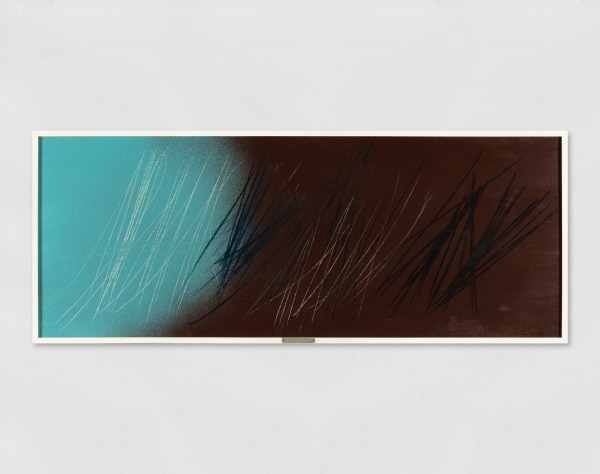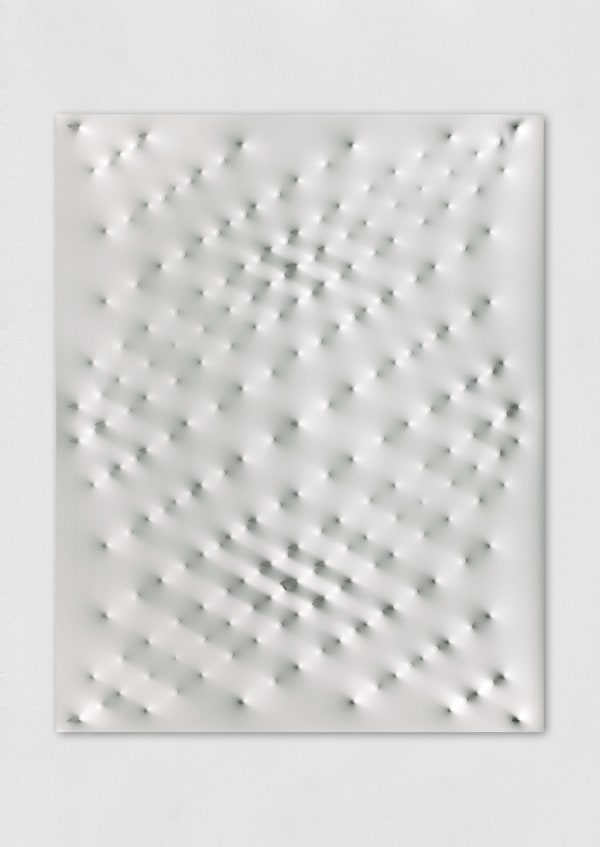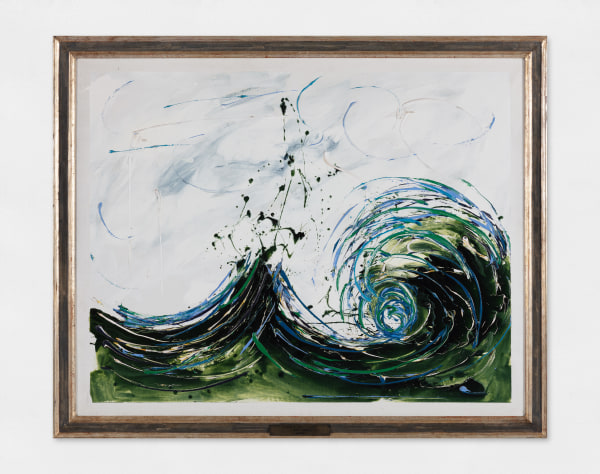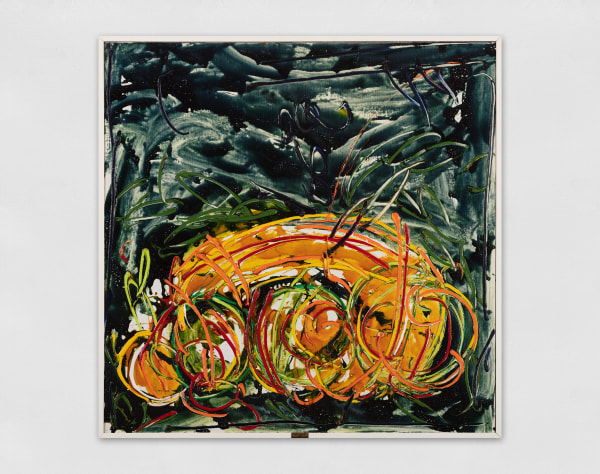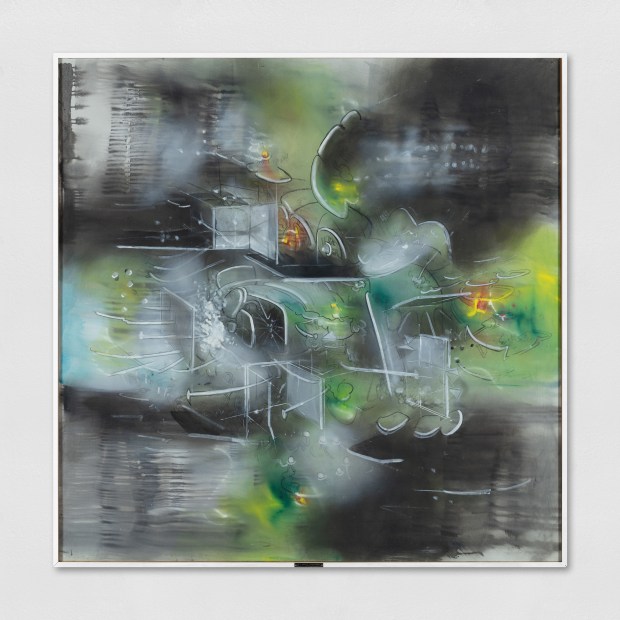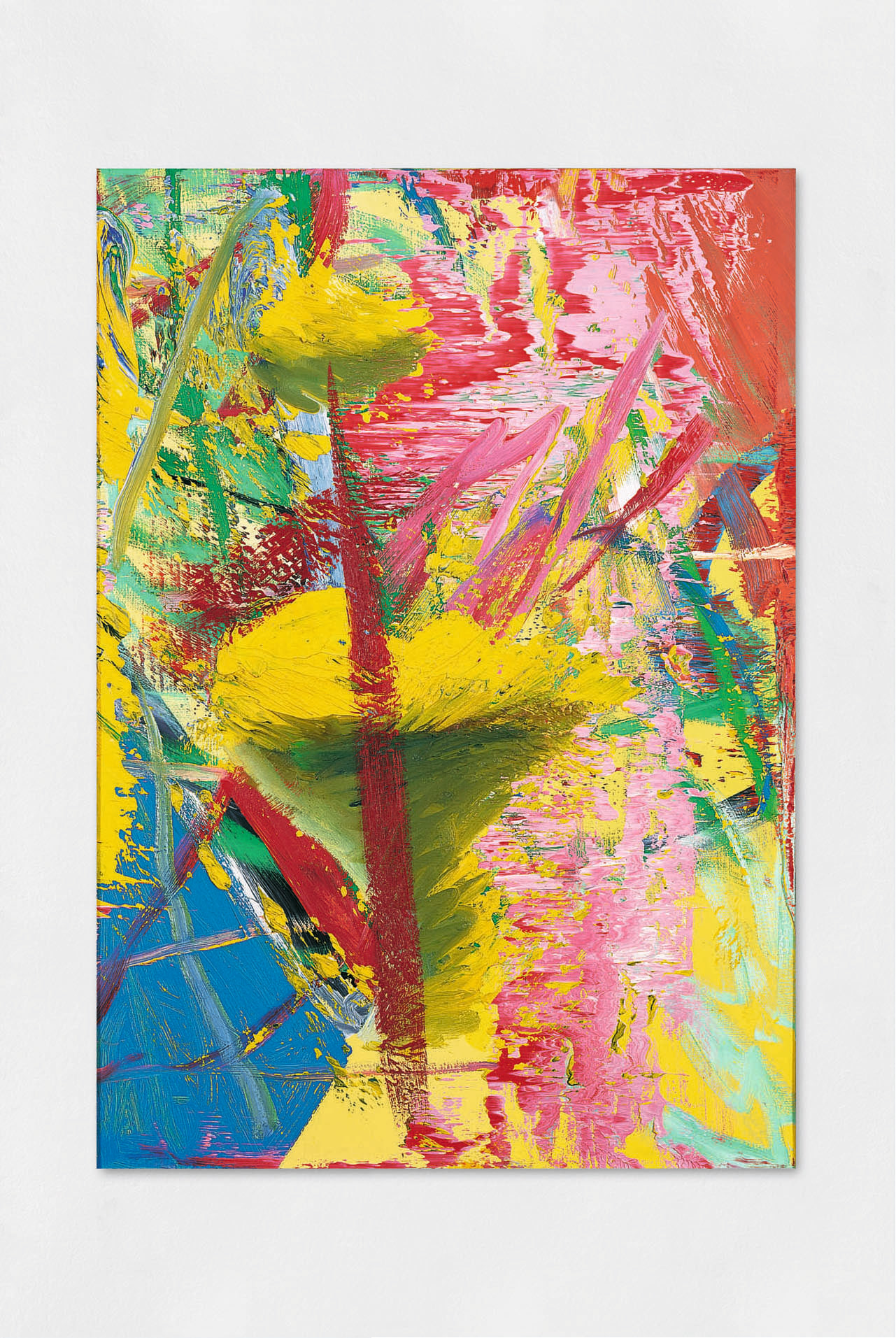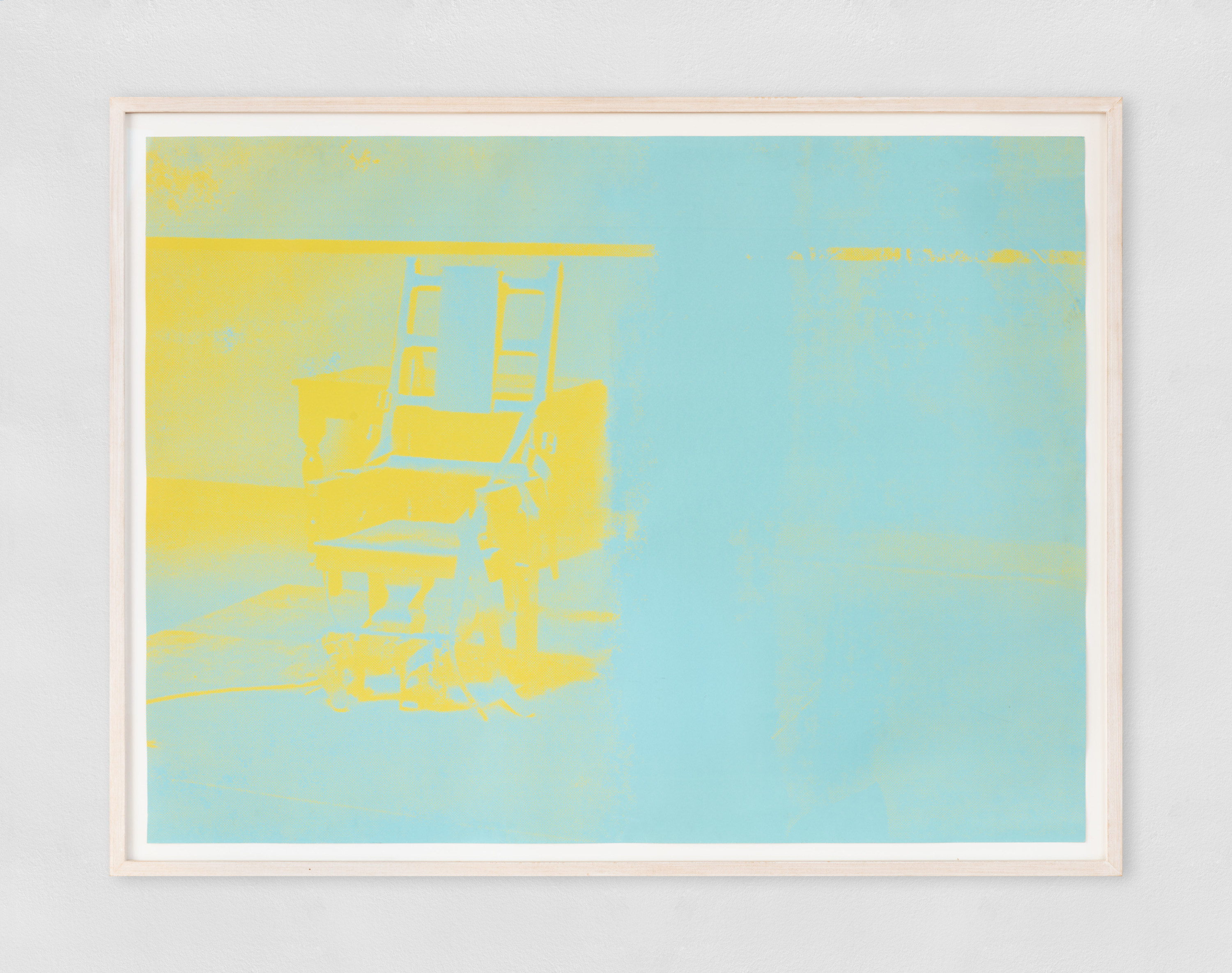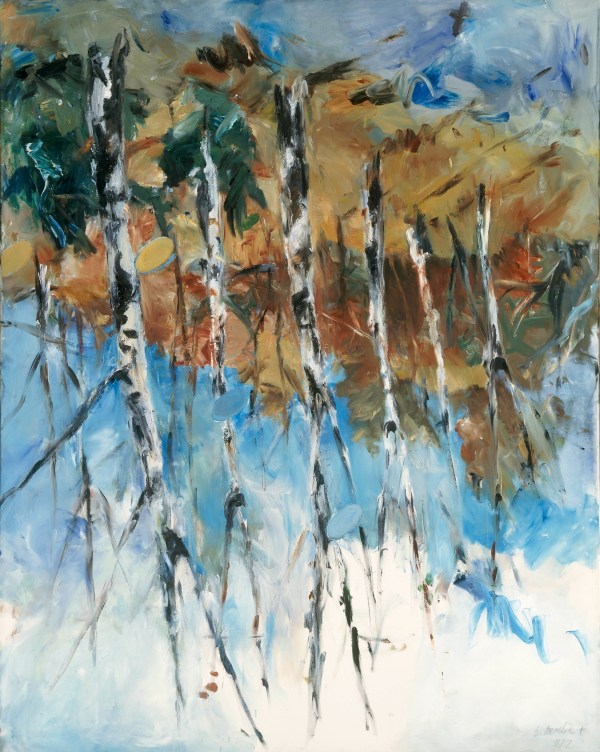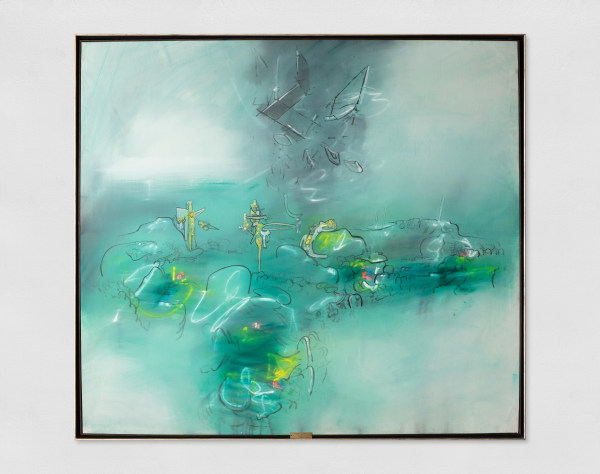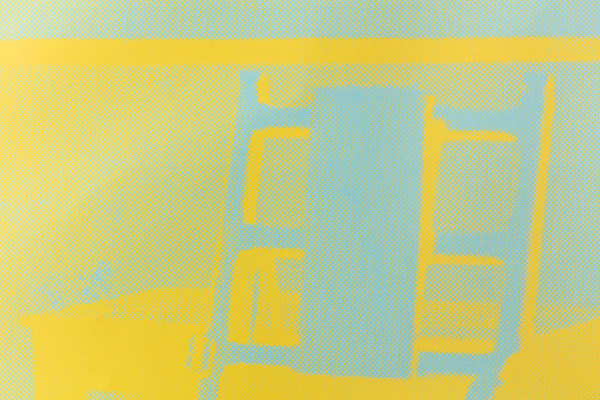Inversamente: Inaugural online exhibition curated by Bartolomeo Pietromarchi, former Director of MAXXI Arte – MAXXI, the National Museum of 21st Century Art
-
Inversamente is a journey through aniconic art between the early 1960s and the beginning of the new millennium.
-
-
An undulating journey that places in dialogue the works of some of the major protagonists of the modern and contemporary art scene, such as Hans Hartung, Mario Schifano, Gerhard Richter and Shirin Neshat.
In a layout offering diverse possible paths, the exhibition features the works of 12 artists from different cultures, histories, traditions and geographical areas. Through their aniconic art, they suggest perspectives capable of overcoming differences in a syncretism that contains and, at the same time, transcends them.
Crossing Abstraction, Informalism, Monochrome, Readymade Installations, and Sculptural Objects. Each work without cultural and historical boundaries explores shape, colour, and form. In the absence of images, these works powerfully challenge our standard modes of communication and convey a weight of emotion and meaning.
In the absence of images, these works powerfully challenge our standard modes of communication and convey a weight of emotion and meaning.
-
-
T 1961 - 49, 1961 by German-French artist Hans Hartung (1904-1989), a leading pioneer of abstract expressionism and member of the Lyrical Abstraction movement, uses gestural brushstrokes, dynamic black and white lines creating a series of intersecting and overlapping shapes against a bold background, emphasising the formal qualities of line, colour, texture, and a rejection of traditional narrative or symbolic content.
Continuing the exploration of the artist's role Mario Schifano (1934-1998) explores our sense of environment and belonging with overlapping and translucent geometric shapes in a palette of blues, greens, and greys that, depict a view into the void. In the following two pieces by Schifano, which belong to the production dedicated to naturalistic subjects, we see a dramatic shift in energy as the fast-paced application gives way to the movement of crashing waves and reverberating fruit clusters.
Nunzio's (1954) influences include the natural world and are often associated with the Arte Povera movement, characterised by the use of found or everyday materials. Through unconventional materials, such as lead moulded over wooden structures, Di Stefano creates abstract forms that evoke a sense of spirituality, movement and fluidity.
-
-
-
The heads are simplified in form and lack any distinguishable features. -
Enrico Castellani (1930-2017) and Agostino Bonalumi (1935-2013) reject the representation of recognisable images or symbols and focus instead on the formal qualities of line, colour, and texture. They sought to create simple yet powerful paintings that engaged the perceptual experience. Castellani's work was influenced by the Bauhaus and Russian Constructivist movements. He sought to explore the relationship between the physical and perceptual aspects of painting, often using a single colour and simple geometric shapes and stretching canvas over a wooden frame to create a three-dimensional surface. This created a sense of tension and movement in his work, as the viewer's perception of the canvas changed as they moved around it. Agostino Bonalumi produced monochromatic relief paintings that often feature shapes projecting from the surface, creating a sense of spatial depth.
Austrian Architect and Artist Walter Pichler (1936-2012) is known for his sculptures, drawings, and architectural designs. Kopf 2, 1989 is a study of the metal sculpture by the same name consisting of two abstract, elongated heads facing each other. The heads are simplified in form and lack any distinguishable features. The work is part of a series of sculptures that Pichler created in the late 1960s and early 1970s, focusing on abstract form and materials such as metal and wire.
Exhibited to great acclaim at Documenta V, Fingermalerei - Birken (Finger Painting - Birch Trees), 1972 is an iconic and majestic woodland landscape by German Artist Georg Baselitz (1938). Baselitz uses his fingers dipped in languid paint to modulate the surface of the canvas creating a new intimacy and intense physical connection with his materials. Inverting the scene, he focuses attention on the materiality of the paint but also defines a radically unconventional way of seeing. The finger-painting approach technique began at the time of this painting, when the artist relocated to a new studio in Musbach on the edge of the Black Forest.
-
-
 Georg BaselitzFingermalerei - Birken (Finger Painting - Birch Trees), 1972Oil on canvas / Olio su tela / Öl auf Leinwand63 3/4 x 51 1/8 in
Georg BaselitzFingermalerei - Birken (Finger Painting - Birch Trees), 1972Oil on canvas / Olio su tela / Öl auf Leinwand63 3/4 x 51 1/8 in
162 x 130 cm -
 Roberto Sebastian Matta EchaurrenInsurpassion, 1967Oil on canvas / Olio su tela / Öl auf Leinwand53 1/8 x 59 1/4 in
Roberto Sebastian Matta EchaurrenInsurpassion, 1967Oil on canvas / Olio su tela / Öl auf Leinwand53 1/8 x 59 1/4 in
135 x 150.5 cm -
 Roberto Sebastian Matta EchaurrenIl Boccio, 1969Oil on canvas / Olio su tela / Öl auf Leinwand57 1/8 x 57 1/8 in
Roberto Sebastian Matta EchaurrenIl Boccio, 1969Oil on canvas / Olio su tela / Öl auf Leinwand57 1/8 x 57 1/8 in
145 x 145 cm -
 Gerhard Richter521-4 Flug, 1983Oil on canvas / Olio su tela / Öl auf Leinwand39 3/8 x 27 1/2 in
Gerhard Richter521-4 Flug, 1983Oil on canvas / Olio su tela / Öl auf Leinwand39 3/8 x 27 1/2 in
100 x 70 cm -
 Andy WarholElectric chair, 1971Silkscreen print on paper / 'Serigrafia su cartoncino / Siebdruck auf Papier35 x 46 7/8 in
Andy WarholElectric chair, 1971Silkscreen print on paper / 'Serigrafia su cartoncino / Siebdruck auf Papier35 x 46 7/8 in
89 x 119 cm -
Electric Chair, 1971 is a silkscreen painting that features an image of an electric chair. Andy Warhol (1928-1987) used this image to comment on the issues of death and violence in American society. The painting's bright and contrasting colours, combined with its flat, graphic style, speak to Warhol's desire to subvert traditional art conventions and explore the relationship between art and mass culture. The use of the electric chair as a subject matter reflects Warhol's interest in the media and its role in shaping public perception.
Weißer Schrei, 1991 (White Scream) is a nail-covered painting by German artist Günther Uecker (1930), best known for his relief-like nail paintings and installations that engage with the physical and sensory experience of the viewer. This large-scale nail-covered paintings consists of hundreds of white, cylindrical nails arranged in a spiral that forms a vortex-like pattern. The work's title, "White Scream", refers to the severity of the arrangement of the nails, which evokes a sense of physical and emotional intensity.
Widely regarded as one of the most important contemporary artists working today. Shirin Neshat (1957) is best known for her photographic and video works that explore the themes of gender, identity, and politics. The work Speechless (Women of Allah Series), 1996 is part of a larger body of work that addresses the cultural and political experiences of women in the Middle East and the suppression of female voices in patriarchal societies by religious and political restrictions.
-
-
Artists
Georg Baselitz, Agostino Bonalumi, Enrico Castellani, Hans Hartung, Roberto Sebastian Matta Echaurren, Shirin Neshat, Walter Pichler, Gerhard Richter, Mario Schifano, Nunzio, Günther Uecker, Andy Warhol. -

-
Works
-
 Hans Hartung, T 1961 - 49, 1961
Hans Hartung, T 1961 - 49, 1961 -
 Georg Baselitz, Fingermalerei - Birken (Finger Painting - Birch Trees), 1972
Georg Baselitz, Fingermalerei - Birken (Finger Painting - Birch Trees), 1972 -
 Agostino Bonalumi, Bianco, 1979
Agostino Bonalumi, Bianco, 1979 -
 Enrico Castellani, Superficie bianca, 1990
Enrico Castellani, Superficie bianca, 1990 -
 Nunzio (Nunzio Di Stefano), Senza Titolo, 2004
Nunzio (Nunzio Di Stefano), Senza Titolo, 2004 -
 Roberto Sebastian Matta Echaurren, Insurpassion, 1967
Roberto Sebastian Matta Echaurren, Insurpassion, 1967 -
 Walter Pichler, Kopf 2, 1989
Walter Pichler, Kopf 2, 1989 -
 Gerhard Richter, 521-4 Flug, 1983
Gerhard Richter, 521-4 Flug, 1983 -
 Mario Schifano, Acerbo, 1983
Mario Schifano, Acerbo, 1983 -
 Mario Schifano, Senza titolo, c.1975-1985
Mario Schifano, Senza titolo, c.1975-1985 -
 Mario Schifano, Senza titolo, 1984
Mario Schifano, Senza titolo, 1984 -
 Shirin Neshat, Speechless (Women of Allah series), 1996
Shirin Neshat, Speechless (Women of Allah series), 1996 -
 Günther Uecker, Weißer Schrei, 1991
Günther Uecker, Weißer Schrei, 1991 -
 Andy Warhol, Electric chair, 1971
Andy Warhol, Electric chair, 1971
-

